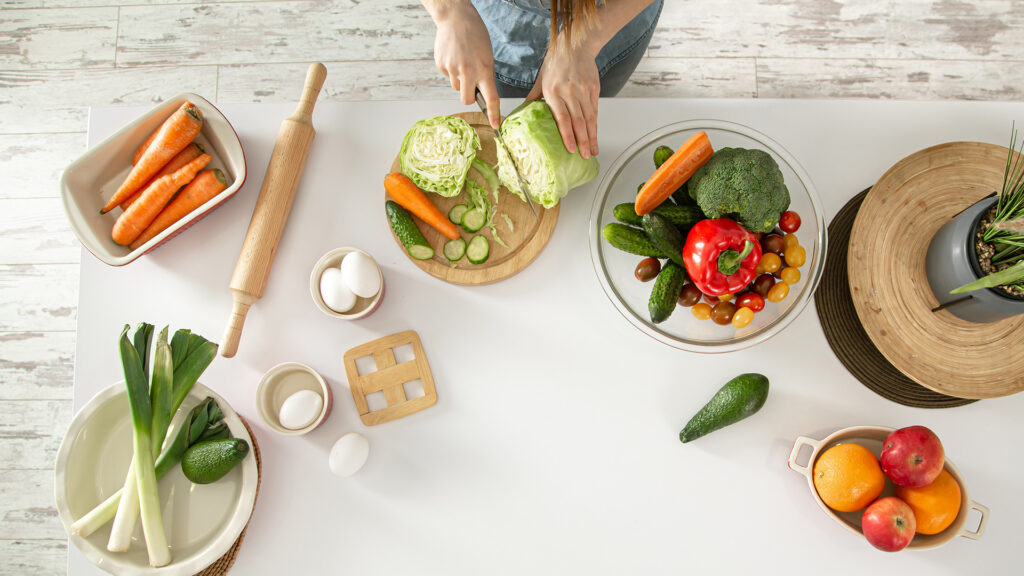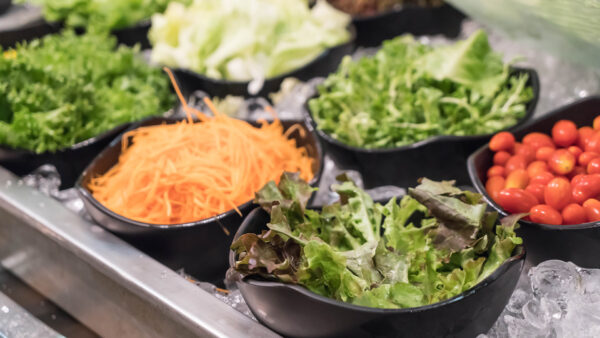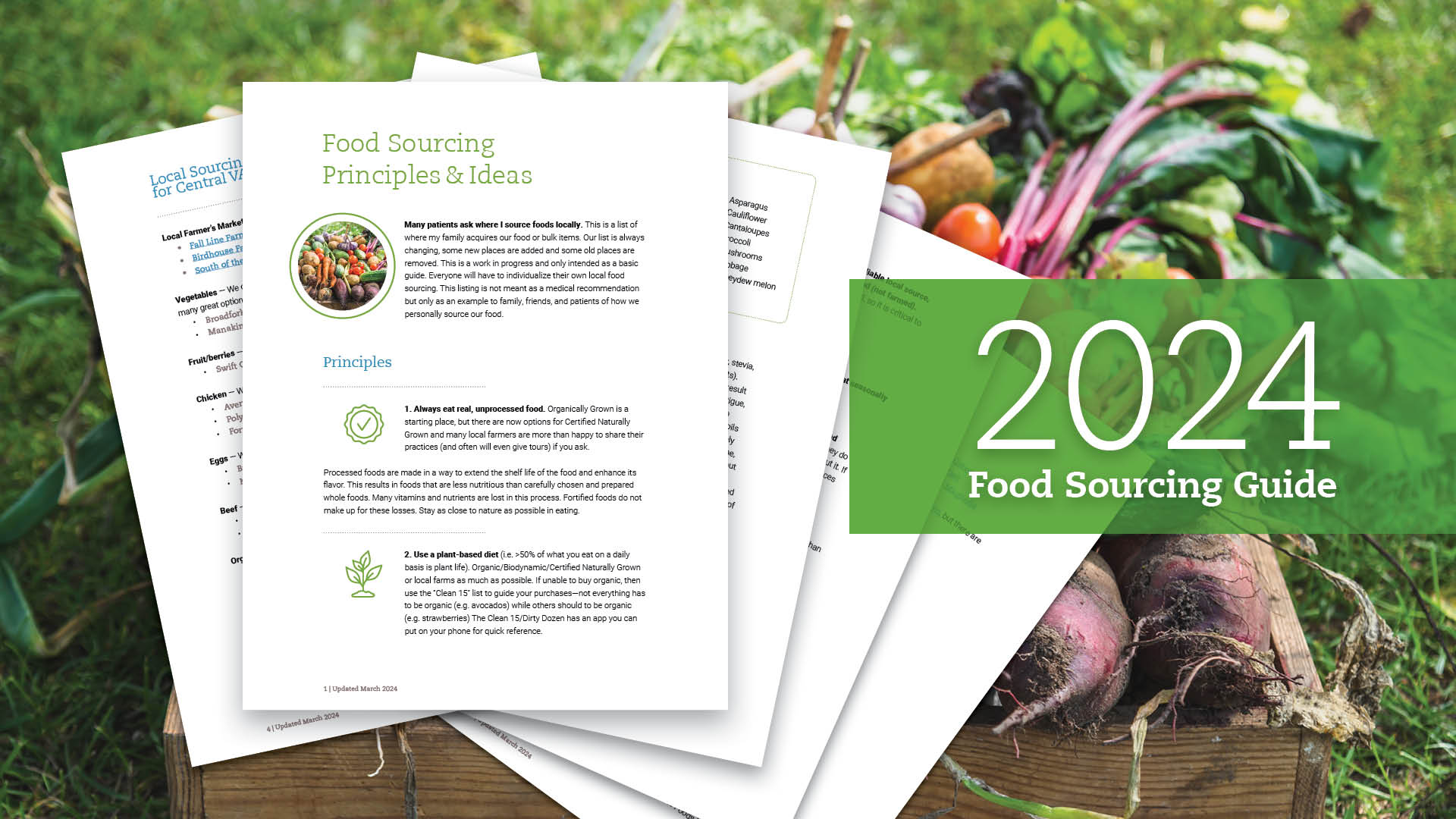Coach’s Corner: 9 Servings of Veggies in Real Life

Jeni O'Neill
May 10, 2023

Subscribe
Never miss out on new content from Dr. Hartman.
Let my words, like vegetables, be tender and sweet, for tomorrow I may have to eat them. – Author unknown
Blank stares. Sometimes that’s the response I get when I tell clients that the Institute for Functional Medicine recommends 9-12 servings of colorful vegetables each day. That is so different from the way that most of us eat; it’s difficult for us to wrap our minds around the idea.

Why 9 Servings?
The recommendation to eat nine servings of vegetables a day comes from the World Health Organization and various other organizations, as a way to promote good health and prevent chronic diseases. Here are just a few specific reasons that vegetables are so health-promoting:
1- Nutrients
We’re just beginning to understand some of the thousands of plant chemicals and how they interact with our bodies to promote health and healing. You have likely read about some of them here on this blog. From cognitive function to metabolism to cancer prevention, plants play an important role in optimal health.
Did you know that food also plays an important role in gene expression? There is so much evidence about how nutrition affects our genes that there is a name for it – nutrigenomics.
The next time you fill your cart at the grocery store, ask yourself what messages your food will be sending to your body.
2 – Reduced insulin = less hunger, fewer cravings, and more energy
Vegetables have fewer carbs and sugars than grains or even fruit, so they don’t prompt our bodies to over-produce insulin. Lower insulin levels result in less hunger and fewer cravings for carbs and sweets. Steady blood-sugar levels throughout the day improve energy and can alleviate that mid-afternoon slump.
That half a plate of high-fiber veggies also feeds your healthy gut bacteria and supports your metabolism.
3 – Better long-term health
Research shows that eating just 5 servings of fruits and vegetables a day reduces our risk of heart disease, cancer, and diabetes. Further, one study showed that people who ate 7 or more servings per day reduced their risk of dying from any cause over an eight year period by 42% compared to those who just ate one serving a day. Sometimes it’s good to be an overachiever.
4 – The more vegetables we eat, the less room for processed food and sweets.
When we eat more vegetables, there is less room in our appetites for sugar and processed foods. Filling our plates with nutrient-dense, low-calorie, additive-free vegetables leaves less real estate on our plate for empty calories that can wreak metabolic havoc.
While it is true that vegetables are generally less calorically-dense than processed foods, this is just one of many reasons to fit lots of colorful veggies into your day.

Breaking Down 9 Servings
What does it look like to eat 9 servings of vegetables in a day? 9 servings of vegetables doesn’t have to be daunting or boring.
Does it feel impossible? It’s not! Below is just one example of what a day in the life of 9 vegetables (plus a bonus blue fruit) might look like. A balanced diet would also include protein along with healthy fats and some carbs, of course.
- Breakfast smoothie: 1 cup of leafy greens, 1/2 cup cauliflower rice (or cucumber or celery), 1/2 cup blueberries (or a beet)
- Lunch: Big salad – 2 cups of leafy greens, 1/2 cup sliced red pepper, 1/2 cup carrot slices
- Dinner: 1 cup cooked broccoli, 1/2 cup of sweet potato
And there are your 9 servings! Yes, I threw in the blueberries as a bonus to get in some purple and because they’re chock-full of powerful phytonutrients and flavor.
Not into veggies in your smoothie? How about in an egg frittata or a scramble? Or you could eat them as a snack.
Notice that red, orange, green, and blue colors are all accounted for here. To add in some yellow, you could have some pineapple or banana for dessert, or add some ginger root and/or lemon to some tea. There are summer squash or yellow peppers to think about too, which are delicious dipped in some guacamole for a snack.

How Could You Make 9 Servings Easier?
Making more vegetables a habit is not that hard, but it does take some planning and a little prep work. How can you make eating healthy easier? Check out last month’s post on meal planning!
Since 2010, Richmond Integrative and Functional Medicine has been helping people to restore their health and hope with an integrative approach to conventional and alternative medicine that’s entirely science-backed. We at RIFM believe everyone is made for health. We offer a comprehensive, in-person patient membership program to ensure you get access to the care you need to thrive.
